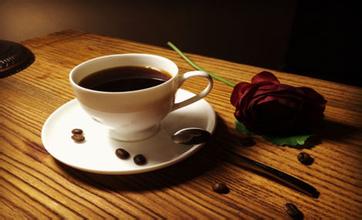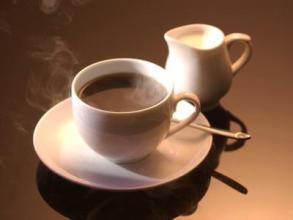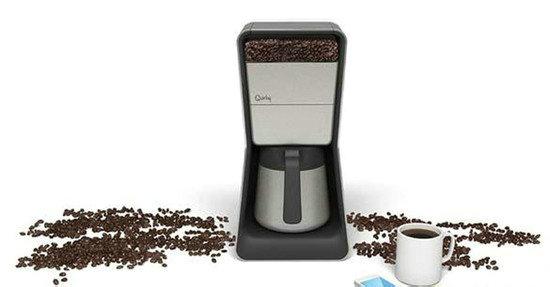Automatic coffee machine grinding degree and coffee concentration
With regard to the extraction of Espresso, there are many introductions on the Internet and books, either too many theories or not enough details. Seeing that many beginners are asking questions about espresso, I dare to take a few photos and write a few words to introduce how I extract Espresso at present. If there are any mistakes in the article, please point them out.
Return to the golden rule of espresso, which has been passed down for half a century, "extract 1 ounce (about 30ml) of espresso (espresso) in 25-30 seconds at 9bar pressure and water temperature of 90-92 degrees Celsius."
Although this golden rule is still controversial in professional coffee forums in recent years, 9bar pressure is basically not controversial, so a bunch of coffee machines boasting 15bar or higher actually refer to the most high pressure of the coffee machine, which is of little significance, and is generally used to fool newcomers. Stable pressure and stable temperature are the criteria for measuring Italian coffee machines.
General coffee beans can be preserved for 3 months if they are unpackaged. There are also espresso beans, which extract espresso, which is rich in oil. There is also a need for a fully automatic special bean grinder equipped with a semi-automatic coffee machine. Very fine grinding. It is very likely that the extraction is insufficient due to the rough grinding. Espresso is a 20-30ml coffee rapidly extracted in 20-30 seconds by high temperature and high pressure.
If you are making your own espresso at home, it is recommended to extract what Espresso needs: a semi-automatic espresso machine, an Italian bean grinder, a powder press the size of your powder bowl, an electronic scale, a timer, an espresso cup (preferably with a scale), a brush, a towel, a bag of not too bad beans.
Let me say a few more words about beans. Many beginners buy cheap beans in order to practice. In fact, this does not help you improve your extraction skills, because the extracted coffee is not good, and you cannot tell if it is your machine problem, or your technical problem, or the bean problem. So, a bag of similar beans can at least let you know that this cup of coffee is "bad", not because of the beans, and then find other reasons to narrow it down as much as possible.
A good concentration of extraction cup requires stable pressure, suitable water temperature, suitable grinding degree, suitable powder content and so on. Then what is appropriate? For example: WBC stipulates that 1 serving of Espresso is 1oz (25~35ml, including Crema), boiled at a temperature of 90.5 to 96 degrees Celsius, brewing pressure 8.5bar~9.5bar, and extraction time of 20 to 30 seconds (no mandatory stipulation). In order to meet the above requirements, a good Italian coffee maker and bean grinder is essential. Often a lot of novice extraction is difficult to concentrate, because at the beginning do not understand, want to get started to play, the result bought a relatively poor so-called 15bar pressure Italian coffee machine and can not accurately adjust the scale of the bean grinder or only suitable for grinding coarse powder single product grinder. I would like to appeal to all novices, do not rush to buy espresso equipment, be sure to do your homework before starting, otherwise it is easy to spend money, but also can not make coffee.
There is also medium fine grinding or very fine grinding (powdered coffee powder) which is finer than fine grinding. The time to grind coffee beans is to grind only the required amount of coffee before brewing coffee. After the coffee bean is ground into powder, its surface area increases and absorbs moisture, which is easy to oxidize. In short, with the passage of time, coffee powder also plays a role of deterioration, resulting in flavor damage.

Important Notice :
前街咖啡 FrontStreet Coffee has moved to new addredd:
FrontStreet Coffee Address: 315,Donghua East Road,GuangZhou
Tel:020 38364473
- Prev

A new method for extraction of espresso
A new method of espresso extraction 1. Generally speaking, the weight of coffee concentrate is extracted at 25g to 50g. two。 Some people concentrate to observe milliliters, others to observe gram weight, I personally prefer to gram weight. Although coffee is liquid, milliliters are taken for granted as a unit for measuring the volume of coffee liquid. However, concentrated oil is a major factor that can not be ignored. Coffee beans
- Next

Delong coffee machine fault light diagram cleaning step manual
Delong coffee machine trouble light diagram cleaning step instructions after the purchase of automatic coffee machine, the first few times of use are normal, but after several times, there will be the above problems, check the thickness of coffee powder is also normal. At this time, it is necessary to check whether there are two pieces of metal filter on the extractor. If there are two pieces, remove one piece, and the fault will disappear. Delong automatic coffee machine lights flashing. Its
Related
- What is the Philharmonic pressure? How to use Philharmonic pressure to make delicious coffee
- Why does a hand grinder have more fine powder than an electric grinder?
- In addition to the hot mom, what is the difference between the versions of EK43 | ditting and Mahdi ek43?
- What kind of equipment do you need to make coffee by hand? Introduction to novice starter cooking equipment tools
- Espresso needs to be ground how thick and thin scale entry Italian Coffee Machine Bean Grinder investigation and Grinding course
- How much does it cost to open a small private cafe? How much does it cost to learn coffee? How to operate it?
- The difference between the flavor characteristics of hand-brewed coffee and coffee maker is hand-brewed coffee really better than coffee maker? Can I use a coffee machine to make coffee beans by hand?
- The difference between 01 and 02 of hario v60 filter cup what is the difference between 01 and 02 filter cup opening and cooking flavor
- What's the difference between the smart cup and the French kettle? Which is better, the French kettle or the Smart Cup?
- What's the difference between a smart cup and a V60 filter cup? The difference between the taste of smart cup and hand-brewed coffee

